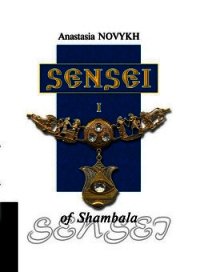Abarat: The First Book of Hours - Barker Clive (читать книги полностью без сокращений бесплатно .TXT) 📗
“Of the island of Yzil, which is Noon, let me say this: it is a place of exceptional beauty and fruitfulness. Furthermore it does a soul good (sometimes) to stand with the sun directly over his head. Here at Yzil, a man hoping for fame might be reminded to live in the moment and not care too much where his shadow may fall tomorrow, but rather concern himself with where it lies today.
“The island is temperate and lush. A gentle breeze passes constantly through the thick foliage, and there are creatures of every shape and size being wafted through the greenery. It is said their singular source is a Creatrix of very ancient origins, called the Princess Breath, who makes her home here on Yzil, and is in the infinite and rapturous process of conjuring life-forms from her divine essence, which the breeze carries through the canopy and out across the Sea of Izabella. There caught by this tide or that, they are carried out across the islands to populate them with new kinds of life.
“At One O’clock, which lies to the south-southeast of Yzil, is the island of Hobarookus. Traditionally this has been a haunt of sea bandits and buccaneers. One O’clock being my lunching hour I have many times sought a healthy repast upon this island, and may happily report that whatever fiendish piratical types haunt the island, their presence has not deterred the cooks of Hobarookus from becoming fair geniuses of their craft. I will tell you plainly, there is no better food to be had at any Hour.
“The topography of the island of Hobarookus is unattractive. It’s mostly rocky, though there are areas of the interior where the ground becomes unpredictably swampy. These areas, which the Hobarookians call the Sinks, are the habitats of kalukwa birds, which species reportedly hatch downy human babies from their eggs every ninth year. These children—if saved from being pecked to death by juveniles of the previous year’s hatching_are often saved by the pirates and raised as their children. This means the island, far from resembling a vile enclave of thieves and murderers, resembles instead an island of wild children watched over fondly by that aforementioned vile enclave of thieves and murderers, like mothers watching over their errant (and occasionally lightly feathered) children.
“At Two lies Orlando’s Cap, which is not an island I know well. An asylum for the insane is located here—so placed because its founder, Izzard Coyne, believed Two in the Afternoon to be an Hour that promotes a healing balm in the soul.
“The island, however, is so ill-favored that it’s hard to imagine those prone to irrationality being much comforted there. The island’s name, by the way, comes from its caplike shape. I can find no evidence of who Orlando was, nor, I suppose, do the sorrowful occupants of the island much care.
“It should be noted, for those interested in either the products of the insane mind or in art (and how often are those things one and the same!), that Coyne’s healing methodologies included allowing his patients the means to create. Thus, scattered across Orlando’s Cap are artifacts that his patients fashioned. Some are of humble ambition, but others seem to be entire fantastic worlds carved from stone or wood and often painted in hallucinatory colors.
“When we look at the way the islands are arranged in the Sea of Izabella, there seems to be a designing hand at work, which conspires with nature to unseat our expectations. Thus close beside the island of Orlando’s Cap, which is a place of dour scenery (albeit enlivened by the creations of Coyne’s patients) there lies the Nonce, which is to my eye the most beautiful of all the islands. How is it that they can be so different from one another, when they are divided by a passage of water so narrow you might skip it with a stone?
“Three in the Afternoon_ the island of the Nonce is a dreamy time. The labors of the day are more than half out, and our thoughts turn to what pleasures the twilight Hours may hopefully provide. Personally I enjoy a siesta around this time, and I can testify to the fact that those who doze in the Nonce do not conjure ordinary dreams. They imagine the Beginning of the World. I have done so myself several times; slept there and dreamed of some Edenic place where there was no enmity, nor division, between plan and animal, angel and man. This suggests to me that there is some validity to the claim, (which was made in the highest of metaphysical circles) that the Nonce is the island where life on the archipelago began.
”So, on to Gnomon, which lies at Four O’clock.
“Here, I wish to interlude with a little piece of autobiography. Some years ago I lost my wife. Literally lost her, in a maze on Soma Plume. I was, needless to say, much distressed by this (I was uncommonly fond of her), and taking the advice of my brother-in-law I went to Gnomon in search of an oracle who might enlighten me as to my wife’s whereabouts.
“Despite the bland reputation of the Hour (there’s nothing very mystical about Four in the Afternoon) the place is littered with the ruins of temples and other oracular sites. In some parts of the island the air is filled with whispering voices, like the scraps of a thousand unfulfilled prophecies. Personally I find it a rather unsettling place, its most distressing location being the North Shore, from the cliffs of which a visitor may look across the Straits of Limbo toward the island of Midnight. There is nothing of that despicable Hour visible at such a distance, of course, except for sheer rock and veils of roiling crimson mist. But it’s more than enough to get the most impoverished of imaginations feeling clammy. Anyway, back to my story…
“The oracle I spoke with on Gnomon did indeed give me some information that finally led to the retrieval of the missing Mrs. Klepp. But while searching for the oracle I discovered an extremely strange phenomenon: Gnomon has upon it a number of roads that seem to have no destination. The theory I offer for this is that Gnomon was once part of the adjacent island of Soma Plume, which is twice its size. What cataclysm caused the land between the two islands to sink can only be guessed at, but it would certainly explain the mystery of the roads, because their destination would then be the Great Noahic Ziggurat on Soma Plume.
“The Ziggurat has been, since time immemorial, a place of burial, and for that reason there are many who dub themselves explorers and gazetteers who have not dared venture there. Pah! to their cowardice, I say. In my travels I have never had dealings with the deceased that were ever less than pleasant. (This is particularly true of the long-since dead; those recently deceased can be irritable on occasion.) Anyway, I urge you not to be put off by the rumors about the Noahic Ziggurat. It is an astonishment.
“Travelers by ship—especially those who are piloting their own vessels—should be warned that the next leg of the trip, the passage from Soma Plume to Babilonium, which lies but an Hour away at Six O’clock, can be treacherous. Not because the waters of the Izabella are particularly choppy thereabouts, but because there is always such a convergence of happy souls about the Hour of Six that navigation between the hundreds of boats which throng the straits is difficult. I’ve witnessed countless collisions and capsizings in the narrow band of water, even, I’m sorry to say, an occasional fatality, marring otherwise joyful expeditions.
“What need I tell you about Babilonium? If you know even a little about these islands of ours, then the reputation of this pleasurable Hour will be perfectly familiar to you. If you are tired of Babilonium, so the saying goes, then you are tired of life, for among its tents and its stages, its hippodromes and its arenas, is every species of frolicsome thing that can be devised by masker, menagerist, musician, mountebank or magician. I have never left that island but with a sense that I have taken only a sip of its pleasures, and promising myself I will return there soon.



